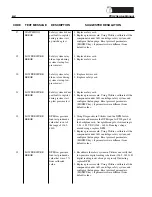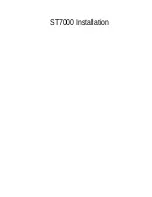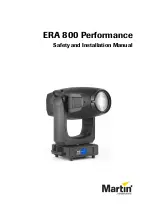
b) If testing the optics signal to an analog voltage, connect a digital
voltage meter, (greater than 3½ digit resolution), to J105 (top plug)
pin 9 (signal) and pin 5 (ground) on the Processor Card.
8. Ensure the centrifuge chuck is empty. Verify the average analog or
digital reading for the bowl optics offset signal is between 1 and 82
digital units or -0.10 to +0.10 Vdc.
9. Install the optic fixture ETD 5060 in the centrifuge and rotate it until
the optic beam is centered on the gray card.
10.Close the centrifuge cover to allow the cover’s bowl collars to lock
around the optic fixture’s square alignment tabs.
11.Make a note of the actual digital or analog voltage optic gray card
reading.
12.Use the Correction Factor printed on the back of the gray card and the
formula below to calculate the optic gain being measured. Ensure the
calculated optic reading with Correction Factor is between 2295 and
3278 digital units or +2.8 to 4.0 Vdc.
Use the following formula to determine the optic gain with Correction
Factor:
Optic
Digital Gain with Correction Factor = Actual Digital Gray Card Reading ÷
Correction Factor
or
Optic
Voltage Gain with Correction Factor = Actual Optic Gray Card Reading
(Vdc) ÷ Correction Factor
Example:
The actual gray card reading is 2397 digital units or 2.926 Vdc
The Correction Factor on the back of the gray card = 0.829
Optic
Digital Gain with Correction Factor = 2397 ÷ 0.829 =
2891 digital units
or
Optic
Voltage Gain with Correction Factor = 2.926 Vdc ÷ 0.829 =
3.53 Vdc
13.If calibration is required, refer to the Bowl Optics Signal Calibration in
Chapter 4.
Note:
The bowl optics signal
test
(operational) range described above
differs from the bowl optics signal calibration range in the
Calibration Chapter. The optics
calibration
range is utilized to
adjust the optics gain if it is found to be outside the acceptable optic
calibration
test
range.
5-10
PCS2 Service Manual
















































